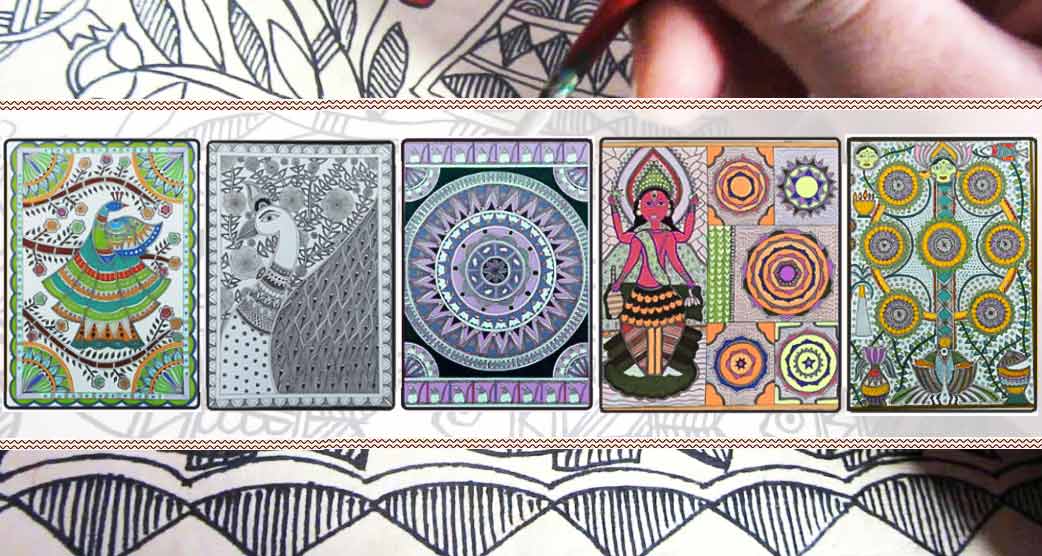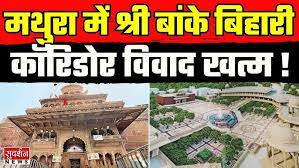Madhubani paintings, also known as Mithila paintings, are a traditional art form from the Mithila region of Bihar. These artworks have a long history and have changed over time. Let us look at the history and evolution of Madhubani paintings.
Origins
Madhubani paintings have a long history and are profoundly ingrained in Bihar’s Maithili culture. While the actual beginnings of this art form are unknown, it is thought to have been practiced for centuries, with some reports claiming a history of over 2,500 years. Madhubani paintings have traditionally been done by women from Bihar’s Mithila region.
The name “Madhubani” means “honey forest,” and it derives from the region’s lush forests, which were famed for their plentiful flora and wildlife. The art form began as a colorful expression on the walls and floors of dwellings, especially during festivals, weddings, and other auspicious occasions.
Madhubani paintings are distinguished by their vibrant colors, meticulous artistry, and unusual geometric patterns. These paintings usually depict Hindu deities, religious stories, and mythological occurrences. The Ramayana, one of the great Hindu epics, has provided numerous Madhubani artists with inspiration, with many paintings showing scenes and characters from the epic.
The art style was often passed down through generations, with parents teaching their children and grandchildren the skills and motifs. Madhubani paintings were not widely recognized until the mid-twentieth century. During the region’s severe drought in the 1960s, the All India Handicrafts Board initiated a campaign to encourage women to make Madhubani paintings as a source of income. This endeavor brought the art form to the general public’s attention and contributed to its international adoption.
Initial Forms
Madhubani paintings were originally created as a type of domestic adornment by women from the Mithila region. These vivid and detailed paintings decorated the walls and floors of dwellings, adding beauty and symbolism to the living areas.
Household women, particularly mothers, played an essential role in conserving and passing along the art form to future generations. They would teach their girls about the processes, motifs, and symbolic meanings of the many materials represented in the paintings. This transmission of information and skills ensured the Madhubani tradition’s survival within families.
The subjects of Madhubani’s paintings varied greatly. They frequently included religious motifs, such as Hindu deities including Lord Krishna, Lord Rama, Goddess Durga, and Lord Shiva. Mythological sequences from epics such as the Ramayana and Mahabharata were also popular.
Natural elements were extremely important in Madhubani paintings. Trees, flowers, birds, fish, and other creatures were commonly depicted, symbolizing fertility, abundance, and harmony with nature. These paintings’ intricate patterns and brilliant colors added to their visual attractiveness.
Madhubani paintings progressed from being merely a kind of domestic decoration to being recognized as an independent art form. The popularity of the art form spread beyond local communities as a result of initiatives such as the All India Handicrafts Board’s project in the 1960s. Madhubani paintings are now acknowledged as a distinct type of Indian folk art, valued for their cultural relevance as well as their aesthetic appeal.
Popularity And Recognition
During the 1960s, while the Mithila region of Bihar was suffering from a terrible drought, William G. Archer, a British colonial officer stationed there, saw the unusual and exquisite murals gracing the walls of the dwellings. Recognizing the creative significance of the ladies of the region, Archer encouraged them to paint on paper as a means of generating revenue during the famine.
The transition from wall painting to paper painting allowed for increased accessibility and preservation of the artwork. Archer was instrumental in popularizing Madhubani paintings by bringing them to the outside world. He gathered a number of pictures and staged an exhibition in the Bihar Industrial Area Development Authority (BIADA) building in Patna, Bihar’s capital city, in 1967.
This was the first public display of Madhubani paintings, garnering the attention of art aficionados, researchers, and collectors. The elaborate and vivid artworks received acclaim and appreciation both in India and around the world. The popularity of the show prompted subsequent exhibitions in other cities, further popularizing the art style and giving economic prospects for Madhubani artists.
Since then, Madhubani paintings have flourished, with artists exploring new topics, techniques, and mediums while staying true to the spirit of the art form. The Indian government has made steps to support and promote Madhubani paintings by providing artists with training, facilities, and opportunities to show their work both domestically and internationally. The art form has garnered international recognition and has been presented in major galleries and museums throughout the world.
Stylistic Development
Originally, Madhubani paintings were created with natural dyes and pigments made from locally available materials such as powdered rice, turmeric, sandalwood, and indigo. The art form expanded throughout time, and artists began utilizing watercolors, acrylic paints, and even poster colors to make these works.
Madhubani painting motifs and styles have changed as well. Originally, the paintings focused on religious and mythological topics, such as scenes from the Ramayana and Mahabharata. Intricate patterns, bold lines, and vivid colors characterized the artworks. However, the subject matter evolved throughout time to encompass topics from ordinary life, nature, and societal issues. Animals, birds, vegetation, and geometric patterns began to appear in the paintings.
Influence in Modern Times
Madhubani paintings have achieved international acclaim and have been displayed in a variety of nations. Many contemporary artists have embraced this art form, experimenting with new techniques and topics while remaining faithful to the old aesthetic. Workshops and training centers for Madhubani painting have also been developed to maintain and promote the art form.
Conclusion
The origins and growth of Madhubani paintings highlight the Mithila region’s rich cultural heritage. Madhubani paintings have come a long way from their humble beginnings as wall decorations to achieving international prominence. The art form continues to thrive, mixing tradition with innovation, and stands as a monument to Mithila’s artistic abilities and originality.



